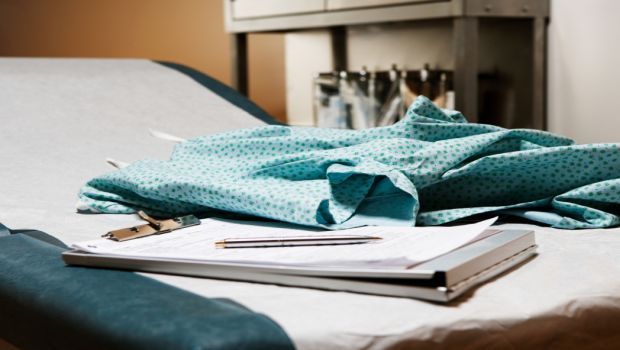FDA Releases Guidance Outlining Premarket Approval of Healthcare Gowns

The Association for the Advancement of Medical Instrumentation (AAMI) is reporting that the Food and Drug Administration (FDA) has issued updated guidance on the regulatory requirements for gowns used in healthcare settings. The FDA has long regulated gowns used during surgical procedures, but there has been some confusion in the industry over whether other types of gowns fall under the agency’s regulatory purview. The new FDA guidance was intended to help clarify the characteristics of gowns considered to be Class II devices and therefore subject to premarket scrutiny. However, the agency specifically stated that the guidance would “not resolve existing differences in terminology.”
“Since the original 1988 final rule, a number of terms have been used to refer to gowns intended for use in healthcare settings including, but not limited to, surgical gowns, isolation gowns, surgical isolation gowns, nonsurgical gowns, cover gowns, comfort gowns, procedural gowns and operating room gowns,” the FDA stated as background in its guidance document.
According to the agency, it considers both level-of-protection claims and descriptive terminology when determining whether a particular type of gown should be classified as a Class I or Class II medical device. The classification generally correlates to risk level, with Class I comprising devices that pose the lowest risk to patients and users, and Class II reserved for devices that pose a moderate risk. For manufacturers, the classifications are important because they directly relate to the amount of regulatory scrutiny any given device faces-the higher the risk level, the greater the scrutiny.
Based on the new guidance, gowns claiming to provide ANSI/AAMI PB70 Level 3 or 4 protection, which corresponds to moderate or high-level barrier protection, are considered to be Class II medical devices and must demonstrate the liquid barrier performance defined within the PB70 standard. In addition, any gown labeled as a “surgical gown” or one “intended for use during sterile procedures” also falls into this category.
Class II gowns are subject to FDA review, and the 510(k) submission should contain the following information in addition to the items identified in the FDA’s 1993 Guidance on Premarket Notification [510(k)] Submissions for Surgical Gowns and Surgical Drapes: Evidence that the gown complies with the claimed barrier performance criteria of the currently FDA-recognized version of ANSI/AAMI PB70 or equivalent standard. ANSI/AAMI PB70 establishes barrier performance and documentation requirements for gowns and their materials. Performance test data to demonstrate that the gown is an effective barrier in accordance with ANSI/AAMI PB70 barrier performance specifications. For both single use and reusable gowns, barrier performance testing should be completed on the final, finished, pre-shipment gown, at the end of the stated shelf life of the gown. If the gown is intended to be reusable, barrier performance testing should also be performed at the end of the labeled use-life (maximum reprocessing cycles). Representative engineering drawing(s), schematics, illustrations, and/or figures of the gown that are clear, legible, labeled with the barrier protection levels of the gown, and include dimensions and the location of the critical and non-critical zones. Sample labeling that clearly identifies the level of liquid barrier protection per ANSI/AAMI PB70. Sample labeling that includes the direction(s) for use and indication(s) for use. Although this guidance is intended to clarify the FDA’s current thinking on the topic, there is lingering concern in the industry about variations in terminology.
“The FDA has tried to clarify when it is necessary to file a 510(k) application for protective attire and drapes. Unfortunately, to do this it has created a new term-surgical isolation gown,” says Donna Swenson, president and CEO of Sterile Processing Quality Services, Inc. and co-chair of AAMI’s Protective Barriers Committee. “The PB70 committee generally understands that protective attire and drapes that provide a higher level of protection (AAMI Level 3 or 4) require more controls in the manufacturing process, including a requirement for these products to have an approved 510(k). However, using the term ‘surgical isolation gown’ could cause more confusion instead of clarifying the issue.”
Source: AAMI
From Shortages to Security: How Reusable Health Care Textiles Can Transform Infection Prevention
March 7th 2025Reusable health care textiles enhance infection prevention, reduce waste, and strengthen supply chains. Hygienically clean textiles offer a sustainable, cost-effective alternative to disposable PPE, ensuring patient safety and environmental responsibility.
Glove Usage Guideline: From The Joint Commission, CDC, and World Health Organization
February 17th 2025Proper glove use is crucial in health care settings to prevent infections. Guidelines from TJC, CDC, and WHO stress correct selection, usage, and disposal to minimize health care–associated infections (HAIs) and cross-contamination risks. Infection preventionists (IPs) play a key role in educating staff, enforcing compliance, and improving patient safety through standardized glove practices.